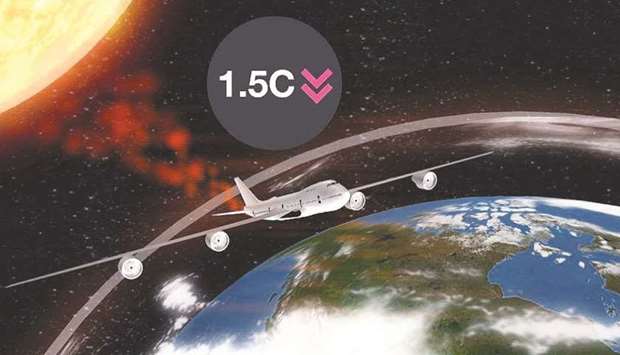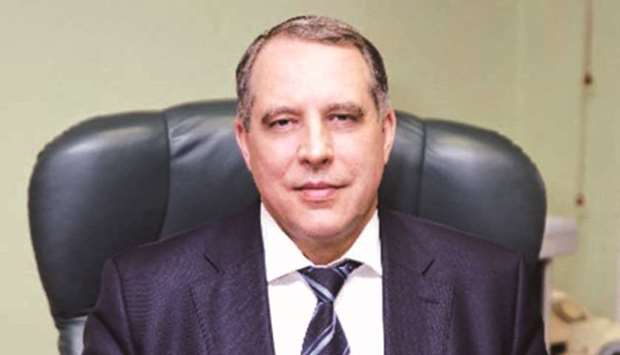Let’s talk about geoengineering

By David Keith/ Cambridge
Negotiations on geoengineering technologies ended in deadlock at the United Nations Environment Assembly in Nairobi, Kenya, last week, when a Swiss-backed proposal to commission an expert UN panel on the subject was withdrawn amid disagreements over language. This is a shame, because the world needs open debate about novel ways to reduce climate risks.
Specifics aside, the impasse stemmed from a dispute within the environmental community about growing scientific interest in solar geoengineering – the possibility of deliberately reflecting a small amount of sunlight back into space to help combat climate change. Some environmental and civil-society groups, convinced that solar geoengineering will be harmful or misused, oppose further research, policy analysis, and debate about the issue. Others, including some large environmental groups, support cautious research.
By reflecting sunlight away from the Earth – perhaps by injecting aerosols into the stratosphere – solar geoengineering could partly offset the energy imbalance caused by accumulating greenhouse gases. Research using most major climate models suggests that solar geoengineering might reduce important climate risks such as changes in water availability, extreme precipitation, sea level, and temperature. But any version of this technology carries risks of its own, including air pollution, damage to the ozone layer, and unanticipated climate changes.
Yet research on solar geoengineering is highly controversial. This has limited research funding to a few tiny programmes around the world, although a larger number of climate scientists are beginning to work on this topic using existing funds for climate research.
Why the controversy? Many fear, with good reason, that fossil-fuel interests will exploit solar geoengineering to oppose emissions cuts. But most researchers are not driven by such interests. The vast majority of those researching solar geoengineering or advocating for its inclusion in climate-policy debates also support much stronger action to reduce emissions. Still, it’s very likely that Big Fossil – from multinational energy companies to coal-dependent regions – will eventually use discussion of geoengineering to fight emissions restrictions.
But that risk is not a sufficient reason to abandon or suppress research on solar geoengineering. Environmentalists have spent decades fighting Big Fossil’s opposition to climate protection. And although progress to date has been insufficient, there have been some successes. The world now spends over $300 billion per year on low-carbon energy, and young people are bringing new political energy to the fight for a safer climate.
Open discussion of solar geoengineering would not weaken the commitment of environmental advocates, because they know emissions must be cut to zero to achieve a stable climate. At worst, such a debate could make some in the broad, disengaged middle of the climate battle less interested in near-term emissions cuts. But even this is not certain; there is empirical evidence that public awareness of geoengineering increases interest in cutting emissions.
It is sensible to focus on cutting emissions, and reasonable to worry that discussing solar geoengineering could distract from that fight. But it’s wrong to indulge a monomania whereby emissions cuts become the sole objective of climate policy.
Vital as it is, eliminating emissions simply stops adding to the burden of carbon dioxide in the atmosphere. The CO2 from the fossil-fuel era, and the resulting climate changes, will persist. We need adaptation that increases resilience to climate threats. But adaptation by itself is no solution. Neither is solar geoengineering. And nor is removing CO2 from the atmosphere – another emerging set of technologies that were considered in the Swiss-backed proposal in Nairobi.
As the American writer H L Mencken put it, “there is always a well-known solution to every human problem – neat, plausible, and wrong.” Complex problems like climate change rarely have a single solution.
My hope is that emissions cuts, solar geoengineering, and carbon removal can work together to reduce the human and environmental effects of climate change beyond what is possible with emissions cuts alone.
Are these hopes justified? The geoengineering research community is small and dominated by a narrow group of members, most of whom are (like me) white, male, and based in Europe or America. Groupthink is a distinct possibility. We may simply be wrong. It would be reckless to deploy solar geoengineering based only on hope and early research.
Instead, an international, open-access research program could, within a decade, dramatically improve understanding of the risks and efficacy of solar geoengineering. Such a programme would cost a small share of the sum currently spent on climate science, and far less than 0.1% of outlays to cut emissions. A wise program would reduce groupthink by increasing the diversity of researchers, and by establishing a deliberate tension between research teams developing specific scenarios for deployment and others tasked with critically examining how these scenarios could go wrong.
Governance is the toughest challenge for geoengineering. A global research program should therefore be coupled with greatly expanded international discussion about these technologies and their governance. Such a debate was unfortunately cut short in Nairobi last week.
Although my generation will not use solar geoengineering, it seems plausible that before the middle of this century, a dramatic climate catastrophe will prompt some governments to consider doing so. By foregoing debate and research on geoengineering now, political leaders may be hoping to eliminate the risks of its future misuse. But their stance may actually increase this danger.
Humans rarely make good decisions by choosing ignorance over knowledge, or by preferring closed-door politics to open debate. Rather than keeping future generations in the dark on solar geoengineering, we should shed as much light on it as we can. – Project Syndicate
* David Keith, a professor of applied physics at Harvard’s School of Engineering and Applied Sciences (SEAS) and a professor of public policy at Harvard’s Kennedy School of Government, is the founder of Carbon Engineering.











